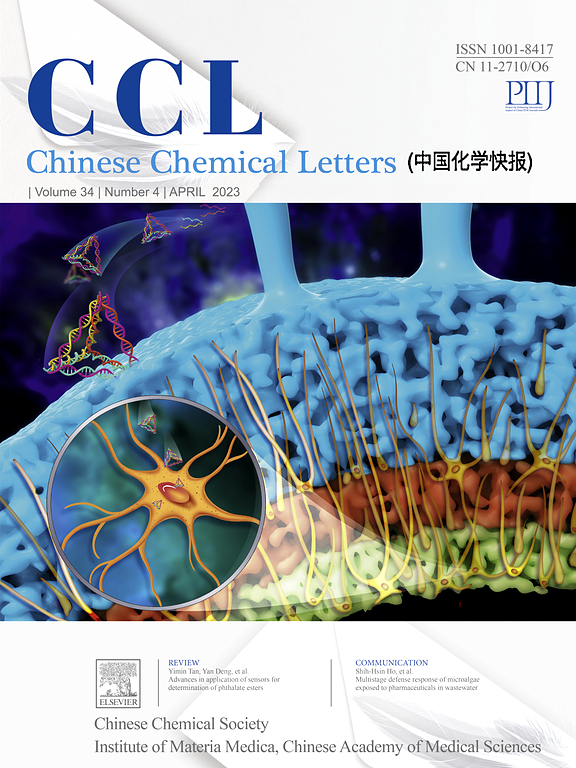通过 F、N 共修饰调节共价三嗪框架的局部电子转移环境,优化氧还原反应
IF 9.4
1区 化学
Q1 CHEMISTRY, MULTIDISCIPLINARY
引用次数: 0
摘要
电催化剂的高电导率可以消除电催化反应过程中异相界面上的肖特基能垒,加速电子快速转移到催化活性中心。因此,电子电导率是氧还原反应(ORR)的一个重要参数。共价三嗪框架(CTFs)作为氧还原反应中的电催化剂具有巨大的应用潜力,其优点是结构单元多样。然而,CTF 固有的低电导率和高阻抗可能会成为电催化应用的重大障碍。本文通过引入 F 和 N 共修饰构建了 CTF,以实现高效的 2e- ORR。与原始 CTF 相比,F 和 N 的共存可使导电率明显提高 1000 倍。因此,F-N-CTF 在生成 H2O2 的催化性能和对反应途径的选择性方面都有所提高。这项工作揭示了 CTF 电导率优化的重要性,为设计用于 2e- ORR 的高电导率非金属有机半导体催化剂提供了指导。本文章由计算机程序翻译,如有差异,请以英文原文为准。

Regulating local electron transfer environment of covalent triazine frameworks through F, N co-modification towards optimized oxygen reduction reaction
The high conductivity of electrocatalyst can eliminate the Schottky energy barrier at the interface of heterogeneous phases during an electrocatalytic reaction and accelerate the rapid electron transfer to the catalytic active center. Therefore, the electronic conductivity is a vital parameter for oxygen reduction reaction (ORR). Covalent triazine frameworks (CTFs) have shown great potential application as electrocatalysts in ORR with a merit of the diverse building blocks. However, the intrinsic low conductivity and high impedance of CTFs could be significant setbacks in electrocatalytic application. Herein, CTFs were constructed by introducing F and N co-modification for efficient 2e− ORR. Compared with the pristine CTF, the co-presence of F, N could increase the conductivity obviously by 1000-fold. As a result, F-N-CTF exhibits enhanced catalytic performance of H2O2 generation and selectivity towards reaction pathways. This work reveals the importance of conductivity optimization for CTFs and provides guidance for designing high conductivity non-metallic organic semiconductor catalysts for 2e− ORR.
求助全文
通过发布文献求助,成功后即可免费获取论文全文。
去求助
来源期刊

Chinese Chemical Letters
化学-化学综合
CiteScore
14.10
自引率
15.40%
发文量
8969
审稿时长
1.6 months
期刊介绍:
Chinese Chemical Letters (CCL) (ISSN 1001-8417) was founded in July 1990. The journal publishes preliminary accounts in the whole field of chemistry, including inorganic chemistry, organic chemistry, analytical chemistry, physical chemistry, polymer chemistry, applied chemistry, etc.Chinese Chemical Letters does not accept articles previously published or scheduled to be published. To verify originality, your article may be checked by the originality detection service CrossCheck.
 求助内容:
求助内容: 应助结果提醒方式:
应助结果提醒方式:


